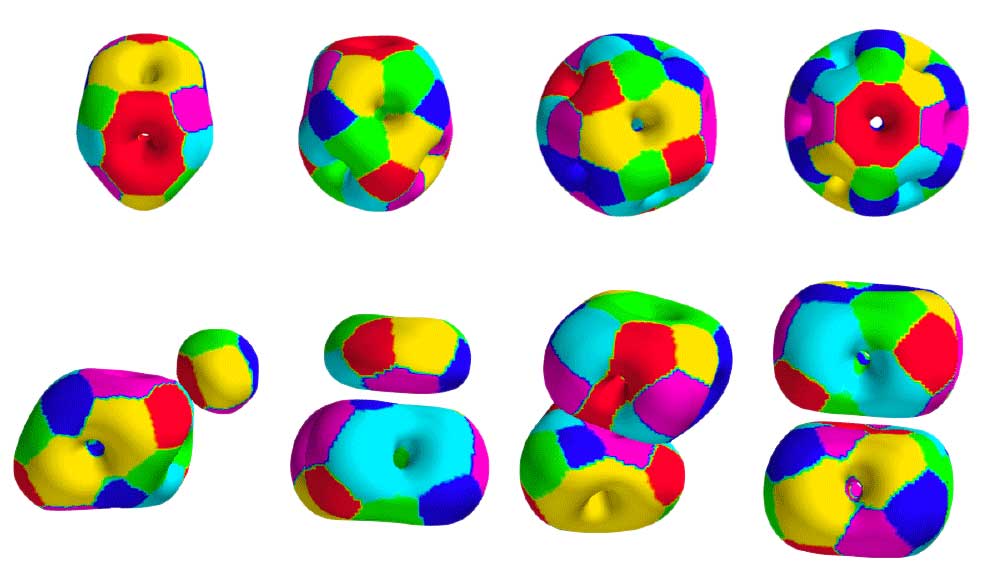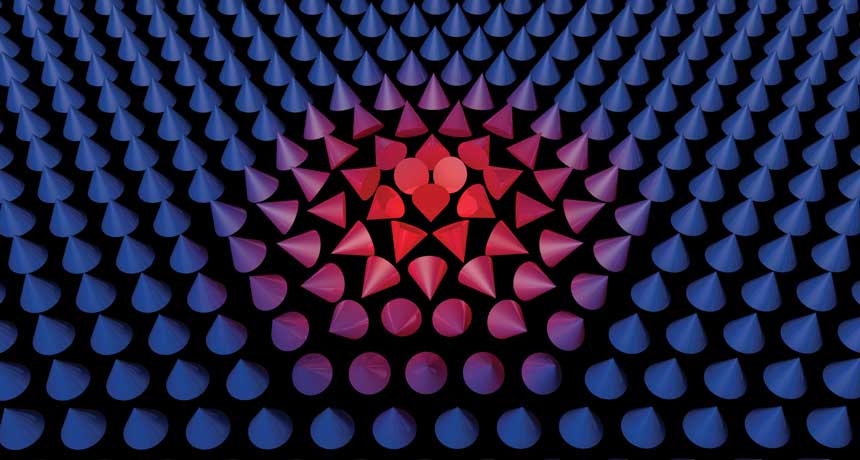According to a new study, the skyrmions i.e., the knot-like structure might enable researchers to unravel the internal workings of atomic nuclei. In the 1960s, nuclear physicist Tony Skyrme suggested that these structures could represent protons and neutrons within a nucleus in theoretical calculations. But despite some initial promise, the idea hit snags. In particular, skyrmion calculations produced misshapen nuclei.
Be that as it may, now scientists have enhanced their calculations of how protons and neutrons should bunch together in the skyrmion picture.
Here are the means by which the thought works: Inside a nucleus, particles called pions are always moving around, holding the nucleus together. Similarly, as an electron has an electric field that can jar different particles, those pions are related with fields as well. In Skyrme’s original picture, protons and neutrons can be depicted as twists in the pion field — or skyrmions — much the same as a bunch tied in a bit of string.
Basically, protons and neutrons are each made up of smaller subatomic particles called quarks and gluons, and the fundamental theory that describes how those particles interact called quantum chromodynamics.

One of the outstanding problems in modern nuclear physics is to determine the properties of nuclei from the fundamental theory of the strong force, quantum chromodynamics (QCD). Skyrmions offer a novel approach to this problem by considering nuclei as solitons of a low energy effective field theory obtained from QCD.
Mathematical physicist and study coauthor Paul Sutcliffe said, “Skyrmion calculations typically neglect heavier particles called rho mesons that are also important for keeping nuclei intact. Including those particles in the calculations changes how the skyrmion “knot” in the field gets tied, and the shapes of the resulting nuclei.”
“It’s as if the knots were tied in a boring piece of string before, and now it’s … a colored string with some sparkles on it. As a result, you now get the right shapes.”
Theoretical physicist Nicholas Manton of the University of Cambridge who was not involved with the study said, “Researchers have long struggled to use skyrmions to study atomic nuclei. But the new result gets closer to being physically reasonable.”
“Eventually, such calculations might help scientists study surprising properties of certain nuclei. An example is carbon-14, a radioactive version of carbon that can be used to date ancient artifacts. It decays with a surprisingly long half-life of about 5,700 years. Skyrmions could help scientists better understand that strange decay.”
Those results agreed with expectations based on experimental data, the team reports in a study in press at Physical Review Letters.
